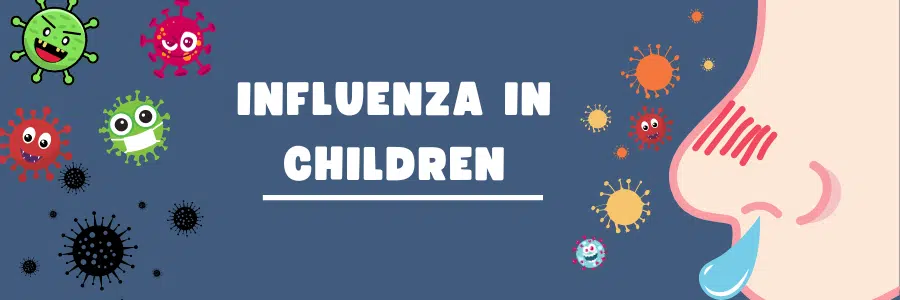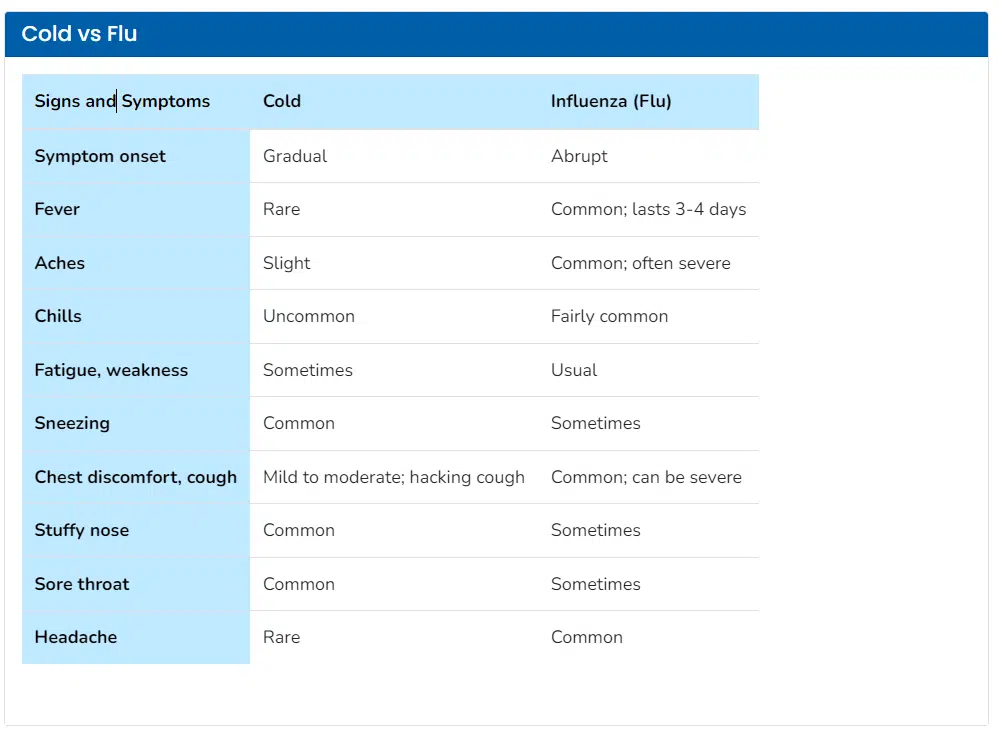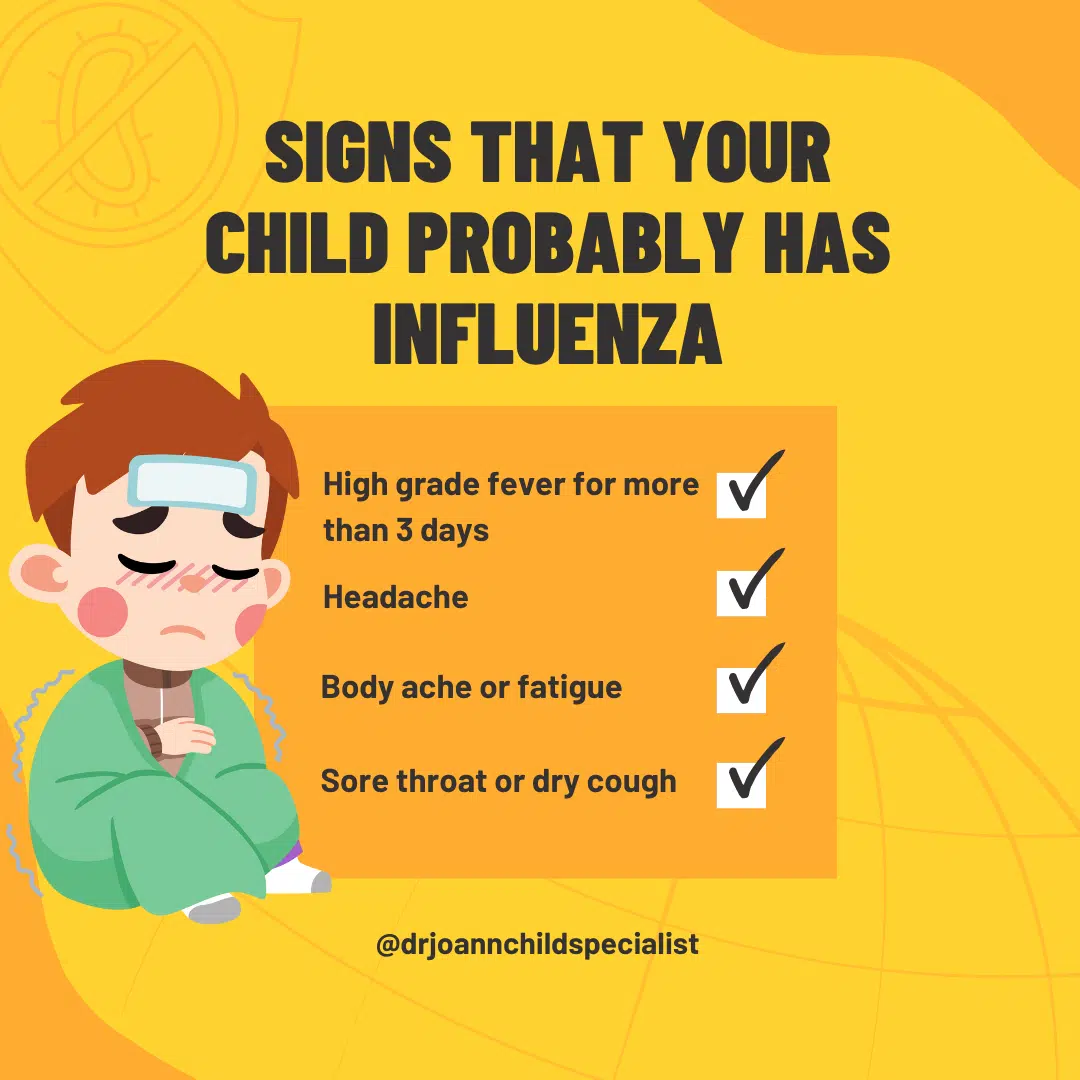
Influenza in Children
Influenza in Children
As the flu season begins, parents need to be vigilant about the health of their children, particularly with the increasing prevalence of influenza. Influenza, commonly known as the flu, is a highly contagious viral infection that affects the respiratory system, causing symptoms such as high fever, body aches, and a persistent cough. While most children recover from the flu within a week, the virus can sometimes lead to more severe complications like pneumonia or require hospitalization. With the ongoing concerns about other respiratory illnesses like COVID-19 and RSV, it’s more important than ever to understand how to protect your child from the flu. This article aims to provide valuable insights into influenza in children, including its symptoms and prevention strategies to help parents navigate this common illness with confidence.
What is Influenza?
Influenza (flu) is a contagious respiratory illness caused by viruses that infect the nose, throat, and lungs. Certain groups, including individuals aged 65 and older, young children, and those with specific health conditions, are at higher risk for severe flu complications. There are two primary types of influenza viruses: A and B. The seasonal flu epidemics each year are primarily driven by these human influenza viruses.
The most effective way to reduce the risk of flu and its serious complications is to receive an annual flu vaccination.
How does it spread?
Usually germs spread in:
- Direct contact: such as touching, kissing, holding hands with an infected person. If the person is infected, they will have germs in the nose, mouth, eyes or skin and by touching other people, they can pass the virus to others. It can also be passed through shared eating utensils and drinking from the same glass.
- Indirect contact: by touching something – such as touching doorknob, toys, phone, countertops or a used tissue that has been touched by an infected person. The virus and germs can live for a short time on surfaces.
- Airborne droplets: When a person coughs or sneezes. Droplets from the cough and sneeze may reach another person.
Sign and symptoms of influenza infection
Some signs that are more common seen in influenza infection than in a typical cold have been lumped together. Hence, if your child has two or more of these signs, do consider doing an influenza test as early as 24 hours after the onset of fever.
- Sudden fever or high grade fever for more than 3 days
- Headache
- Muscle aches
- Extreme fatigue
- Dry cough
- Sore throat
- Loss of appetite
In some cases, your child may also have symptoms such as:
- Nausea
- Vomiting
- Diarrhea
Although most people who get the infection will recover in a few days to less than two weeks, some people will develop some complications such as pneumonia. Moderate complications of influenza infection will include sinus and ear infection. Serious complications from the flu can include inflammation of the heart (myocarditis), brain (encephalitis), or muscle tissues (myositis, rhabdomyolysis), as well as multi-organ failure, such as respiratory and kidney failure. The flu virus can provoke a severe inflammatory response in the body, potentially leading to sepsis, a life-threatening reaction to infection. Additionally, the flu can exacerbate existing chronic conditions. For instance, individuals with asthma may experience more frequent asthma attacks during a flu infection, and those with chronic heart disease might see a worsening of their condition due to the flu.
The image below is to show the differences between cold symptoms and influenza infection symptoms :

Centers for Disease Control and Prevention. (2024). Flu Symptoms. Retrieved from https://www.cdc.gov/flu/symptoms/symptoms.htm
When to see a doctor?
If your baby is 3 months and below and is having:
- Having trouble breathing
- No appetite and is vomiting
- Has high fever (38.5 degree Celsius and above)
Take your child to emergency department if your child is:
- Breathing rapidly or struggling to breathe,
- Experiencing chest pain or coughing up blood-stained mucus,
- Coughing so intensely that they’re choking or vomiting,
- Drinking very little and hasn’t urinated at least every 6 hours while awake,
- Vomiting for over 4 hours or having severe diarrhea,
- Much sleepier than usual, refusing to eat or play, or extremely irritable and unable to be comforted,
- Not improving after 5 days with a persistent fever, or if they seemed to be improving and then suddenly developed a new fever,
- Showing flu-like symptoms and has a serious chronic illness,
How can I protect my child from influenza infection?
- This is one of the ways to reduce the chance of children being infected with influenza. This vaccine is recommended annually for everyone that is more than 6 months old.
- Since the influenza virus changes slightly each year, your child will need an updated flu vaccine at the start of each flu season. For children under nine years old, two doses are often required during their first year of vaccination.
- Upon the vaccination, your child might be having some pain and redness at the site of injection. Less commonly, children may develop a fever or aches and pains which last one to three days.
2. As our hands are touching many things, handwashing is very important to reduce the spread of viruses.
3. Keep babies under 3 months old away to reduce the spread of viruses
4. Teach your child to cover their nose and mouth with tissues or elbow whenever they sneeze or cough.
5. Avoid sharing cups, utensils, towels or toys as young children are prone to place the toys in their mouths.
In conclusion, influenza in children is a significant concern that requires vigilant attention from parents, caregivers, and healthcare professionals. Understanding the symptoms, prevention strategies, and treatment options can greatly reduce the impact of the flu on our youngest and most vulnerable. By ensuring that children receive annual flu vaccinations, practicing good hygiene, and recognizing early signs of illness, we can help safeguard their health and well-being. As we continue to learn more about influenza and its effects, staying informed and proactive will be key to keeping our children safe and healthy during flu season.
References
CDC. (2021, November 18). Flu Symptoms & Diagnosis. CDC. https://www.cdc.gov/flu/symptoms/index.html
Influenza in children. (n.d.). Caringforkids.cps.ca. https://caringforkids.cps.ca/handouts/health-conditions-and-treatments/influenza_in_children
Influenza (Flu) in Children – Health Encyclopedia – University of Rochester Medical Center. (n.d.). Www.urmc.rochester.edu. https://www.urmc.rochester.edu/encyclopedia/content.aspx?ContentTypeID=90&ContentID=P02514
Kids Health Info : Influenza (the flu). (2009). Rch.org.au. https://www.rch.org.au/kidsinfo/fact_sheets/Influenza_the_flu/

